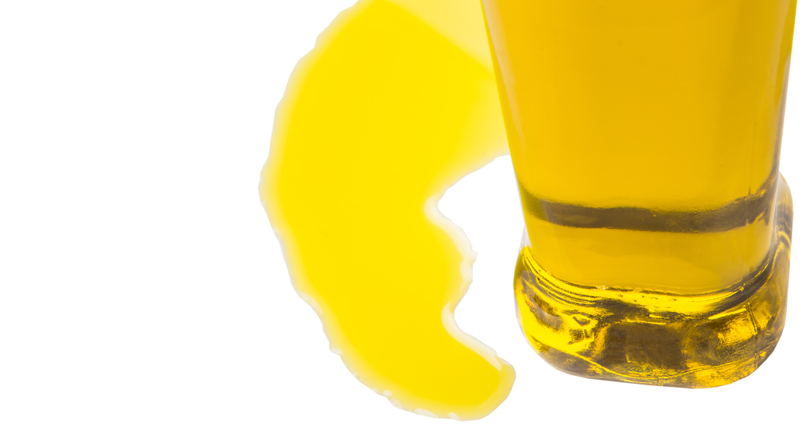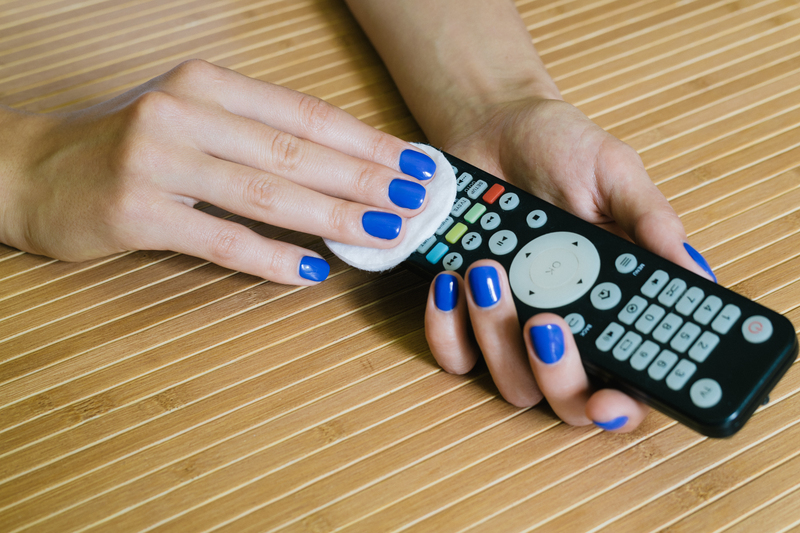Reduce Residue: Quick Techniques for Cleaning Enamel Oven Trays
Keeping your enamel oven trays spotless not only maintains their shine and extends their lifespan but also ensures the safety of your meals. Food residue, burnt-on grease, and stubborn stains can accumulate quickly on these surfaces, and, if left unchecked, they can affect both cooking quality and the flavor of your meals. In this comprehensive guide, you will discover quick, effective, and safe techniques for cleaning enamel oven trays and how to reduce residue build-up in the future. Whether you're a passionate home cook or just looking to maintain a tidy kitchen, these cleaning tips will help you achieve sparkling results with minimum effort.
Understanding Enamel Oven Trays and Why They Accumulate Residue
Enamel oven trays are popular in many kitchens due to their durability, non-reactive coating, and sleek appearance. However, their glossy surface can become a magnet for stubborn grease, burnt food, and residue. Enamel is a form of glass fused onto metal at high temperatures, making it strong yet susceptible to chipping if mishandled.
Why does residue build up?
- Creamy sauces, oils, and sugars can caramelize and stick during baking.
- Frequent usage without immediate cleaning can cause burnt-on food to accumulate.
- High oven temperatures can 'bake in' stains, making them more difficult to remove.
- Improper cleaning techniques may scratch or damage the enamel, providing crevices for residue to cling to.

Precautions Before Cleaning Enamel Trays
Before diving into cleaning, it's important to take these safety and preservation measures:
- Always allow trays to cool down to avoid thermal shock and burns.
- Never use harsh metal scouring pads or abrasive cleaners that can scratch or chip the enamel coating.
- Check for existing chips or cracks; excessive force could further damage the tray.
Essential Supplies for Cleaning Enamel Oven Trays
- Sponge (non-abrasive)
- Dish soap (mild, degreasing type is ideal)
- Baking soda
- White vinegar
- Hot water
- Soft-bristled brush
- Clean microfiber cloth
- Rubber gloves (optional, for sensitive skin)
Quick and Effective Techniques for Cleaning Enamel Oven Trays
1. The Basic Soap and Water Method
If residue build-up is minimal, a simple wash might suffice. This is often all you need for lightly soiled enamel oven trays.
- Fill your sink with hot water and add a generous squirt of dish soap.
- Place the tray in the solution and allow it to soak for 15-20 minutes.
- Wipe gently with a non-abrasive sponge, focusing on visible stains.
- Rinse thoroughly with hot water and dry with a clean towel.
This method works best when performed soon after cooking, as it prevents food and grease from hardening onto the surface.
2. Baking Soda Paste for Stubborn Stains
For tough grease or burnt-on food, harness the gentle abrasiveness of baking soda without damaging your enamel tray.
- Sprinkle a generous amount of baking soda directly onto the residue or make a thick paste using water.
- Spread the paste evenly over the stains and let it sit for at least 30 minutes (or overnight for persistent stains).
- Gently scrub with a soft-bristled brush or sponge in circular motions.
- Rinse thoroughly and dry with a microfiber cloth.
*Tip: For extra cleaning power, mix in a few drops of dish soap with the baking soda paste.
3. The Power of Vinegar Soak
White vinegar is a natural degreaser and stain remover that breaks down mineral deposits and sticky residues.
- Fill the tray with a mixture of equal parts white vinegar and hot water.
- Let it soak for 30-60 minutes; the acidic nature will help lift grime.
- After soaking, scrub gently with a non-abrasive sponge.
- Wash with dish soap and rinse thoroughly.
Warning: Do not use vinegar on trays with chipped enamel, as the acid could worsen existing damage.
4. Steam Cleaning in the Oven
Steam is one of the quickest residue-reducing techniques for enamel oven trays and can loosen baked-on gunk in minutes.
- Pour a thin layer of water onto your enamel tray.
- Place the tray inside the oven (set to 200?C/400?F) for 15-20 minutes. The heat will create steam that loosens stuck-on residue.
- Allow to cool, then wipe with a wet sponge to remove loosened debris.
- Wash as usual with dish soap and dry thoroughly.
5. Dishwasher Use (If Allowed by Manufacturer)
Some enamel trays are dishwasher safe. If yours is, use the dishwasher's hottest setting for convenience. Check the manufacturer's guidelines to ensure it's safe, as frequent dishwasher cycles could tarnish the enamel finish over time.
- Remove heavy residue with a sponge before placing in the dishwasher.
- Avoid stacking items on top of the tray to prevent chipping.
Preventive Measures to Reduce Residue Buildup
The best way to keep your enamel oven trays clean is by preventing residue accumulation in the first place. Here are smart habits to integrate into your baking and roasting routines:
- Line trays with baking parchment, silicone mats, or aluminum foil before cooking sticky dishes.
- Wipe up drips and splatters immediately after cooking, while trays are still warm (but not hot).
- Soak trays promptly after use to loosen residue and avoid hardening.
- Use oil or cooking sprays sparingly to avoid sticky build-up.
- Clean oven trays at least once a week, even if lightly used, to maintain a residue-free surface.
What Not to Do: Mistakes to Avoid When Cleaning Enamel Trays
To preserve the integrity of your enamel baking trays and reduce residue effectively:
- Do not use steel wool, sharp knives, or abrasive cleaning powders -- these can permanently scratch or chip the enamel coating.
- Avoid soaking for too long if enamel is chipped, as underlying metal could rust.
- Do not use oven cleaner sprays unless specifically labeled for enamel surfaces; some products contain harsh chemicals that may damage the finish.
- Never scrub with excessive force -- gentle circular motions are adequate for most cleaning tasks.
Eco-Friendly Cleaning Solutions for Enamel Oven Trays
Many chemical cleaners on the market can be harmful to your health and the environment. Instead, try these eco-friendly, residue-reducing cleaning solutions for your enamel trays:
-
Lemon Juice and Baking Soda:
Squeeze the juice of one lemon onto the tray and sprinkle heavily with baking soda. Let sit for an hour, then scrub with a sponge. Lemon's acid and fragrance work together to lift stains and deodorize. -
Salt Scrub:
For tough spots, sprinkle coarse salt over the tray, dip a sliced potato or soft brush into water, and scrub in circles. Rinse thoroughly. -
Cream of Tartar Paste:
Make a thick paste with cream of tartar and water, apply to stains, and leave for an hour before wiping clean.
Tip:
Store-bought eco-cleaners marked "safe for enamel" are a convenient option if you're short on time.
How to Restore Shine to Dull Enamel Oven Trays
Sometimes, your enamel trays might look clean but lack their original luster. Here's how to refresh them:
- After cleaning and rinsing, rub the surface with a cloth dipped in a solution of one tablespoon white vinegar to one cup water. This step removes soap residue and restores natural shine.
- Polish dry with a microfiber cloth to enhance gloss and remove streaks.

FAQs: Keeping Enamel Oven Trays Residue-Free
Can I use bleach on enamel oven trays?
Bleach is not recommended for cleaning enamel surfaces as it can erode the coating and discolor the tray over time. Stick with gentler cleaning solutions.
How often should I deep-clean my enamel oven trays?
For regular home use, a monthly deep clean combined with light post-use washing is sufficient. However, increase frequency if you bake or roast greasy foods often.
What if my enamel tray has chips?
Trays with chips or cracks should be used with caution. Avoid soaking them for extended periods, and discontinue use if rust develops or the chip expands.
Conclusion: Achieve Sparkling, Residue-Free Enamel Oven Trays
Reducing residue on enamel oven trays doesn't have to be a chore. By using these quick cleaning techniques -- from baking soda paste to steam cleaning -- you can maintain spotless trays with ease. Remember, prompt attention and regular maintenance are key to preventing stubborn build-up. Embrace these best practices, and your enamel oven trays will stay clean, glossy, and ready for your next culinary creation.
For more home cleaning tips and tricks, explore our blog and transform your kitchen into a sparkling, residue-free area.
- Reduce residue for healthier cooking.
- Save time -- clean smarter, not harder!
- Keep your enamel oven trays pristine for years to come.


